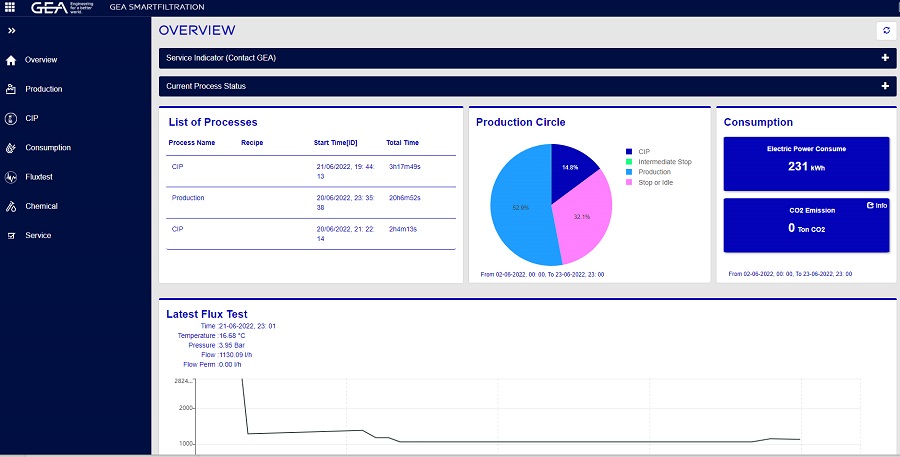At Drinktec (Messe München, 12-16 September 2022), GEA introduces the intelligent software solution GEA Smart Filtration for membrane filtration plants, which monitors the plant status remotely via app. This tool is another cornerstone in GEA's software portfolio that leverages the power of cloud connectivity and real-time analytics to increase plant availability and performance. The pilot partner is Seagarden, a supplier of fish-based ingredients in Norway. The company extracts fish protein from cod skin using GEA technology and, following a spray drying plant in 2019, has now also invested in a GEA membrane filtration plant that will be connected via app in the future.

GEA Smart Filtration monitors membrane filtration systems in real time and visualizes the status on a digital dashboard. The goal is to extend the useful life of the membrane and enable customers to prevent failures and product loss. Plant performance data is stored in the cloud and helps condition monitoring extend the life cycle of the filtration equipment ensuring continuous high productivity. In phase 1, to be launched at Drinktec, GEA Smart Filtration will serve as an overview and service planning tool. In the following two development phases, it will increasingly become a digital forecasting tool that independently analyzes Big Data and proposes consumption optimization options.
Faster response and predictive maintenance
Usually, filtration times or CIP cycles in preventive maintenance schedules determine when to replace the membranes. “However, if the filtration process is not controlled within tight tolerances, the separation performance of the membranes with large pore sizes will deteriorate. In addition, the high throughput rates needed in crossflow processes could damage shear-sensitive materials,” explains Anders Kjems Christensen, Service Product Manager Liquid Technologies, GEA. Another example is fouling on the membranes that lowers the permeate flux. Plant operators would then be faced with expensive cleaning and regeneration processes for secondary waste. “We developed GEA Smart Filtration to eliminate this problem for our customers. All technical parameters, process and mechanical design, hygiene criteria and, of course, the organic raw materials we integrate into the monitoring system. Potential problems in the membrane plant can then be detected in real time and very clearly before they lead to malfunctions.”
50 percent less cleaning water for membrane filtration
Incorporated into the digital system are two membrane plant-specific technical applications that halve the amount of water needed to flush out the cleaning media. These too are currently undergoing numerous customer tests very successfully. The principle: While the plant is being cleaned, sensors constantly evaluate the water’s permeate quality and terminate the process as soon as the appropriate hygiene level is reached, instead of scheduling a predefined plant cleaning cycle. Test results show that SmartFiltration Flush also benefits the CIP system as a whole: Since piping dimensions are based on water volume, the new tool facilitates a more compact CIP design. This is complemented by new, particularly efficient CIP software: GEA SmartFiltration CIP means that the pumps are operated in a pulsating rather than continuous mode. As a result, they consume 50 to 60 percent less power during the CIP process.














